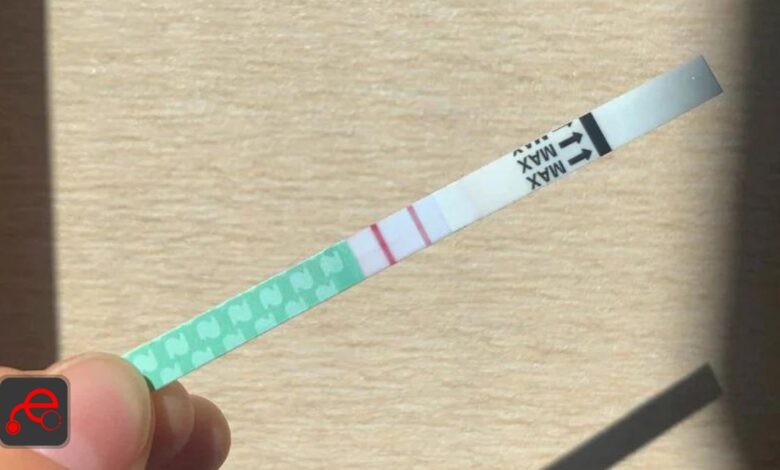How to Use Pregnancy Strips

Pregnancy strips are the easiest, most accessible, and fastest way to check if you have conceived or not. During pregnancy, many changes occur in female bodies. Some changes a woman may notice are missed periods, frequent urination, nausea, morning sickness, and so on. Here, we talk about how to use pregnancy strips at home.
As you feel any of these signs/changes, a test for the confirmation of your pregnancy is required, but it is not a hundred percent sure that any of these signs indicate pregnancy, to save your precious time, and money by going to a doctor. A short and fastest way has been designed to check if you are pregnant or not.
A Pregnancy Strip. Yes, you got us right. It is the most convenient. Cost-effective and time-saving method to perform at home without having much expertise. The best part of this test is that these strips are available easily at any pharmacy or medical store.
Hormonal Changes
Among many changes in your body during pregnancy, hormonal change is one of them. During pregnancy, a hormone called HCG (Human chorionic gonadotropin), also known as the pregnancy hormone, its level increases in the female body. Thus, this hormone can be easily detected in your urine or blood. Detection of this hormone in urine can be done by the correct usage of pregnancy strips.
Human chorionic gonadotrophin is mainly secreted by an embryo in your uterus, when there is a presence of an embryo in your uterus, the level of HCG rises, thus it can be detected in urine or blood sample.
HCG hormone can be detected in urine or blood 12-14 days after you conceive and it has shown the highest levels between the 8th to 11th week of pregnancy.
How to Use Pregnancy Strips at Home
If you are confused or do not know about the way to perform the test, you are at the right place. We will discuss in detail how to perform this test at home systematically:
Get Your Hands Over the Strips
If you have noticed, any signs that are discussed above, you should get your hands over the pregnancy strips immediately for confirmation. It is easily available at any pharmacy. There is a window for testing on the strip, where you can easily place your sample.
Error! Filename not specified.
Take Sample
As we have discussed that during pregnancy, HCG level rises, which can be detectable in urine or blood. Therefore, there is a need for a urine sample to perform the test. You will get accurate test results if you take a urine sample early in the morning because the level of hormones is highest in the body in the morning. You can also take the sample at any other time of the day. Make sure that the sample container must be clean and dry.
Test Performance
After the collection of the urine sample, place your sample on the test window on the strip, or you can also dip the strip in your sample. Many strips have a line that shows the maximum sign to make sure that the sample has not exceeded that maximum line.
Check Results
After you have done the pregnancy test, now place the kit on a table or any straight surface, and wait for some time. After some time, lines will appear. The time for the appearance of lines varies from kit to kit, and mostly the time is mentioned on the kit that you are using. It may take a few seconds to a few minutes. When the lines appear on the strip, interpret the results as mentioned in the kit information leaflet.
| Appearance of Lines | Depiction of Results | Depiction of Results |
|---|---|---|
| If double lines appear | Indicates positive result. One line may be fainted but will have the same thickness. | Go to your doctor for further results. |
| If a single line appears | Indication of a negative result | Perform the test again after some days |
| If faint double lines appear | Your HCG level is low. | Perform the test again after some days |
Cast Aside the Strip Properly
After you have performed the test, make sure to discard the strip properly. You should also label “infectious” on that to confirm the safety of other beings.
We also got a list of frequently asked questions about pregnancy strips; we will answer them one by one.
How to Use Pregnancy Strips at Home to Get Accurate Results?
There is no special way to perform this test, just follow the instruction discussed above. Many people are curious about the accuracy of results; the researcher has proved that the results are 90% accurate. The kit is designed for your ease to perform the test at home for confirmation.
Affect of Medicines on Test Results
Many medicines can hurt your results. These medications include:
- Water pills
- Neuroleptics
- Sleeping pills
- Benzodiazepines
- Infertility medications
In addition to these, if you have certain medical conditions like Alzheimer’s disease or Parkinson’s disease your results can be affected. Make sure to see your doctor in such cases.
Affect of Medical Conditions on Results
Sometimes you may have any medical condition prevailing that can result in the positivity of results. These conditions are:
- A body lacking in IgA (antibody)
- Pregnancy-related trophoblastic tumors (uterine tumors)
- Pregnancy-related trophoblastic disease (pregnancy-related tumor)
- Kidney cancer
- Digestive system cancers
When to Perform Pregnancy Strips Test?
As soon as you witness the signs that are discussed above, you should get your hands over the strips and perform the test. These signs are:
- Frequent urination
- Missed periods
- Nausea/ vomiting
Consult a Doctor
If you are trying to conceive and you are not taking any birth control pills, and constantly getting the same results. You should consult a doctor/ gynecologist. He/she will perform the test, but a doctor will take your blood sample since HCG levels can also be detected in the blood. Then he will send that sample to the laboratory and will interpret your results according to the prevailing conditions.
Consulting a doctor is of major importance if you are conceiving instead of trying a lot, because you may have any medical condition that should be treated properly.
Conclusion
One of the simplest ways to determine pregnancy is to use pregnancy test strips. This approach is effective, dependable, and safe. After the results of the strip testing are confirmed, consult with your doctor to make visit arrangements.
FAQS
Q: What are pregnancy strips?
A: Pregnancy strips, also known as pregnancy test strips or pregnancy test kits, are over-the-counter tools used to detect the presence of human chorionic gonadotropin (hCG), a hormone produced by the placenta during pregnancy, in a woman’s urine.
Q: How do I use pregnancy strips?
A: The instructions for using pregnancy strips can vary slightly depending on the brand, but typically involve the following steps:
- Collect a urine sample in a clean, dry container.
- Remove the pregnancy strip from its packaging.
- Dip the absorbent end of the strip into the urine sample for a few seconds.
- Lay the strip flat on a clean surface and wait for the specified amount of time (usually a few minutes) for the results to appear.
Q: When is the best time to use a pregnancy strip?
A: The best time to use a pregnancy strip is usually a few days after a missed period, as this is when the levels of hCG in the urine are typically high enough to be detected by the test. However, some pregnancy strips can detect hCG earlier than this, so it’s important to follow the instructions on the specific product you are using.
Q: How accurate are pregnancy strips?
A: Pregnancy strips are generally quite accurate when used correctly, with a success rate of around 99%. However, false negatives can occur if the test is taken too early, if the urine is too dilute, or if the test is expired or defective. False positives are less common, but can also occur if there is a chemical or hormonal imbalance in the body.
Q: What do the results of a pregnancy strip mean?
A: If the pregnancy strip shows two lines, this usually means that you are pregnant. If there is only one line, this typically means that you are not pregnant. It’s important to read the instructions carefully to understand how to interpret the specific type of pregnancy strip you are using.
Q: What should I do if I get a positive result on a pregnancy strip?
A: If you get a positive result on a pregnancy strip, it’s important to schedule an appointment with a healthcare provider as soon as possible to confirm the pregnancy and start prenatal care. They can also provide guidance on next steps and answer any questions you may have.
Q: Can pregnancy strips be used at any time of day?
A: Yes, pregnancy strips can be used at any time of day, but it’s generally recommended to use them first thing in the morning when hCG levels are highest. This can help increase the accuracy of the test.
Q: What should I do if I get a negative result on a pregnancy strip but still haven’t gotten my period?
A: If you get a negative result on a pregnancy strip but still haven’t gotten your period, it’s possible that you took the test too early or that the test was faulty. You can try taking another test a few days later, or schedule an appointment with a healthcare provider to discuss any concerns or symptoms you may be experiencing.
Q: Are there any precautions I should take when using a pregnancy strip?
A: It’s generally safe to use pregnancy strips, but there are a few precautions to keep in mind:
- Always follow the instructions carefully to ensure accurate results.
- Use a clean, dry container to collect your urine sample, and wash your hands before and after using the test.
- Store the test in a cool, dry place and check the expiration date before using.
- If you get a positive result, schedule an appointment with a healthcare provider as soon as possible to confirm the pregnancy and start prenatal care.
